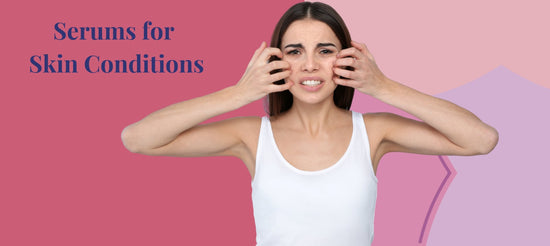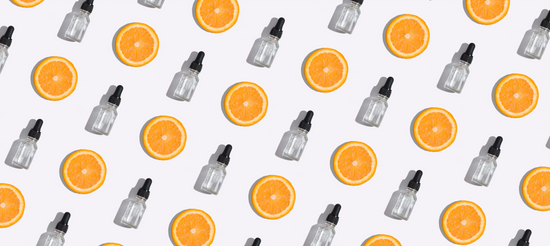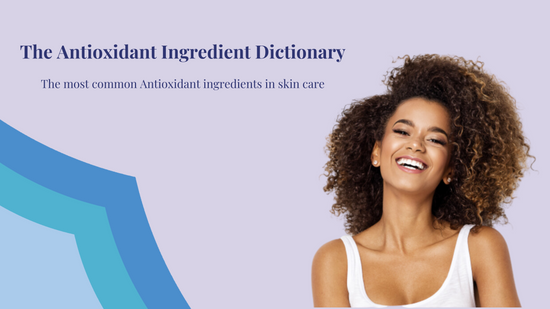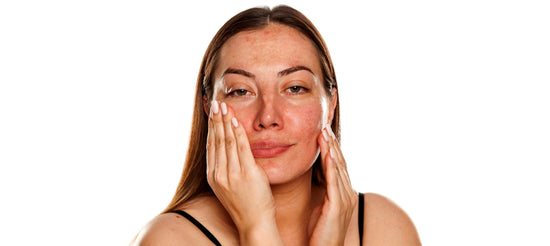Ferulic Acid in Skin Care
Ferulic acid is a compound with anticarcinogenic, antioxidant, and photoprotective qualities. It is found mainly in serums, but you can see all of our ferulic acid products here!
It is derived from many different plant species, as it is a nearly omnipresent naturally occurring chemical in common fruits and vegetables.
Ferulic acid is used in many skin care products designed for photosensitive or UV damaged skin.
A lot of research supports the use of ferulic acid as an antioxidant, and it seems to be most effective within specific temperature and pH conditions. (27)
Read below to find out all about the properties and uses of ferulic acid in skin care!

What is ferulic acid
4-hydroxy-3-methoxycinnamic acid, also known as ferulic acid, makes up plant cell walls. (4-8)
People ingest ferulic acid regularly through their diets because it is a key component of most fruits and vegetables. It is considered a significant antioxidant and is one of the countless reasons vegetables are so good for you! (21)
It can be found in various fruits, grains, and vegetables like: (1,5,8,9)
Because ferulic acid is harvested as a byproduct of general agriculture, it is a cheap and common ingredient in many skin care products. Here are some of my favorites:
Chemistry
Ferulic acid is part of a family of "polyphenolic" compounds called hydroxycinnamic acids which are common in skin care. (6,11,18)
Some other hydroxycinnamic acids in skin care are caffeic, p-coumaric, p-hydroxycinnamic, and sinapic acids.(5)
Ferulic acid has been shown in multiple studies to greatly prevent sun damage through absorption of UV radiation. (19)
Specifically, it protects against UVB-induced erythema.(4)
The UV absorbing antioxidants in ferulic acid have been shown to protect the skin barrier and other phospholipid membranes.(4,20)
The antioxidant properties come from the free tail of its nucleus which has been shown to easily stabilize free radicals. (8)

How is ferulic acid used in skin care?
Ferulic acid is most often used in skin care in cosmetic creams focused on UV protection like sunscreens. (8,22)
Antioxidants like ferulic acid, vitamin C, and vitamin E are also helpful in increasing the shelf life of skin care products.
It is considered one of the best natural compounds for combatting UV damage and hyperpigmentation.
Benefits
The primary benefits attributed to ferulic acid in skin care are its antioxidant and UV absorbing properties.
One study investigating the antioxidant capacity of ferulic acid found that usage either orally or topically might be good at fighting skin cancer. (16) But more research always needs to be done on cancer treatments.
It is used in many sunscreens because in the right conditions it is very good at preventing sun damage and hyperpigmentation.
Outside of skin care, studies have taken place and are ongoing trying to determine the potentially beneficial effects of ferulic acid on: (1,17)
- Cardiovascular disease
- Diabetes
- Neurodegenerative conditions
- Various cancers
Side effects
Ferulic acid has no notable side-effects. It is present in basically every common edible plant species and does not even pose a rare risk of allergy.
Safety
Ferulic acid is absolutely safe for both topical and oral use. It is biologically standard for the body to metabolize the compound.(6)
This ingredient is even safe to use during pregnancy and had reported no toxicity when applied topically.
Because ferulic acid is produced as a byproduct of regular plant growing operations, there is no particular environmental impact associated with ferulic acid products either.
Safety in Pregnancy
Ferulic acid is considered safe for use during pregnancy due to its low systemic absorption when applied topically, which minimizes any potential risk to the fetus.

Is ferulic acid good in skin care?
In the rights conditions, ferulic acid is considered one of the best antioxidant, UV protecting, skin lightening ingredients in skin care.
There are conflicting reports on whether ferulic acid is stable in different pH environments, so it is possible that its effectiveness can vary based on the pH of other ingredients it is used alongside.(1,3,19)
For example, if ferulic acid is used at the same time or before a low pH ingredient like glycolic acid, it could lower the effectiveness of ferulic acid.
"6" is considered the perfect pH environment for using ferulic acid. (27)
Try to layer your skin care products in such a way that they each work their best. Make sure that products you layer on top of your ferulic acid are a pH of 6 or greater.
Each custom skin care regimen has its own quirks, so be sure your custom regimen isn't too acidic or basic to include ferulic acid.
In general, ferulic acid can be found in many sunscreens, skin lighteners, and anti-aging products.
For sun damage
Ferulic acid has long been considered an effective photoprotective agent in skin care products. (8)
Other studies have found that it not only absorbs UV radiation to prevent sun damage, it but actually treats and repairs sun damage. (17)
Ferulic acid is most effective in sun damage treatments used in combination with other antioxidant compounds like vitamins C&E. (23)
It has been proposed that products containing ferulic acid in combination with other antioxidants are the best choice for protecting the skin from sun damage. (23)
For hyperpigmentation
Because ferulic acid is considered one of the best natural compounds for absorbing UV radiation, it is used in a number of sun damage treating and skin lightening products.
It is a potent tyrosinase inhibitor compared to other naturally occurring compounds, and has been found to slow down melanin production (depigmentation) notably better than: (28)
For those reasons, it is considered great in treatments of melasma, PIH, and most other kinds of hyperpigmentation.
It is best used in combination with other tyrosinase inhibitors or PAR-2 blockers.
When choosing a moisturizer to use over ferulic acid, look for these oils that are natural skin lightening ingredients:

For wrinkles
Ferulic acid has antioxidant properties, which are commonly found in products designed for aging skin and wrinkles.
Ingredients like ferulic acid work best alongside retinoids and other anti-aging ingredients.
It is important to make sure the ingredients you pair with ferulic acid are roughly a pH of 6 for maximum effectiveness.(27) (Retinol ranges between 5-6 pH)
Shop by your Baumann Skin Type to see if ferulic acid products are right for your anti-aging regimen.

What is ferulic acid serum?
Ferulic acid is used on skin as an antioxidant and to lighten dark spots.
Why is ferulic acid added to Vitamin C Serums?
Ferulic acid boosts the antioxidant capabilities of ascorbic acid. It also helps stabilize the serum so that it lasts longer once opened.
Why is ferulic acid such a popular skin care ingredient?
Ferulic acid is in many of the top selling skin care products. It helps to inhibit the production of melanin, the pigment responsible for dark spots and uneven skin tone. It does this by neutralizing free radicals and reducing oxidative stress on the skin, which can trigger melanin production. This also gives an antiaging effect. Additionally, ferulic acid enhances the stability and efficacy of other skin-lightening agents, such as vitamin C and vitamin E, further improving its ability to reduce pigmentation. It is even safe to use during pregnancy and risk of allergy is low.
Here are some of the best references on Ferulic Acid in skin care:
- Barone E, Calabrese V, Mancuso C. Ferulic acid and its therapeutic potential as a hormetin for age-related diseases. Biogerontology. 10:97, 2009.
- Ouimet MA, Griffin J, Carbone-Howell AL, et al. Biodegradable ferulic acid-containing poly(anhydride-ester): degradation products with controlled release and sustained antioxidant activity. Biomacromolecules. 14:854, 2013.
- Wang QJ, Gao X, Gong H, et al. Chemical stability and degradation mechanisms of ferulic acid (F.A) within various cosmetic formulations. J Cosmet Sci. 62:483, 2011.
- Svobodová A, Psotová J, Walterová D. Natural phenolics in the prevention of UV-induced skin damage. A review. Biomed Pap Med Fac Univ Palacky Olomouc Czech Repub. 147:137, 2003.
- Bourne LC, Rice-Evans C. Bioavailability of ferulic acid. Biochem Biophys Res Commun. 253:222, 1998.
- Ou S, Kwok KC. Ferulic acid: pharmaceutical functions, preparations and applications in foods. J Sci Food Agric. 84:1261, 2004.
- Rice-Evans CA, Miller NJ, Paganga G. Structure-antioxidant activity relationships of flavonoids and phenolic acids. Free Radic Biol Med. 20:933, 1996.
- Graf E. Antioxidant potential of ferulic acid. Free Radic Biol Med. 13:435, 1992.
- Centini M, Rossato MS, Sega A, et al. New multifunctional surfactants from natural phenolic acids. J Agric Food Chem. 60:74, 2012.
- ilius M, Ramanauskien? K, Briedis V. Release of propolis phenolic acids from semisolid formulations and their penetration into the human skin in vitro. Evid Based Complement Alternat Med. 2013:958717, 2013.
- Chen W, Becker T, Qian F, et al. Beer and beer compounds: physiological effects on skin health. J Eur Acad Dermatol Venereol. 2013 Jun 27. [Epub ahead of print]
- Arranz S, Chiva-Blanch G, Valderas-Martinez P, et al. Wine, beer, alcohol and polyphenols on cardiovascular disease and cancer. Nutrients. 4:759, 2012.
- Hsiao CY, Hung CY, Tsai TH, et al. A study of the wound healing mechanism of a traditional Chinese medicine, Angelica sinensis, using a proteomic approach. Evid Based Complement Alternat Med. 2012:467531, 2012.
- Dutt S. General synthesis of α-unsaturated acids from malonic acid. Quart J Chem Soc. 1:297, 1925.
- Lesca P. Protective effects of ellagic acid and other plant phenols on benzo[a]pyrene-induced neoplasia in mice. Carcinogenesis. 4:1651, 1983.
- Nair SC, Panikkar B, Akamanchi KG, et al. Inhibitory effects of Ixora javanica extract on skin chemical carcinogenesis in mice and its antitumor activity. Cancer Lett. 60:253, 1991.
- Zhang LW, Al-Suwayeh SA, Hsieh PW, et al. A comparison of skin delivery of ferulic acid and its derivatives: evaluation of their efficacy and safety. Int J Pharm. 399:44, 2010.
- Bonina F, Puglia C, Ventura D, et al. In vitro antioxidant and in vivo photoprotective effects of a lyophilized extract of Capparis spinosa L buds. J Cosmet Sci. 53:321, 2002.
- Saija A, Tomaino A, Trombetta D, et al. In vitro and in vivo evaluation of caffeic and ferulic acids as topical photoprotective agents. Int J Pharm. 199:39, 2000.
- Saija A, Tomaino A, Lo Cascio R, et al. Ferulic and caffeic acids as potential protective agents against photooxidative skin damage. J Sci Food Agric. 79:476, 1999.
- Wang X, Geng X, Egashira Y, et al. Purification and characterization of a feruloyl esterase from the intestinal bacterium Lactobacillus acidophilus. Appl Environ Microbiol. 70:2367, 2004.
- Anselmi C, Centini M, Maggiore M, et al. Non-covalent inclusion of ferulic acid with alpha-cyclodextrin improves photo-stability and delivery: NMR and modeling studies. J Pharm Biomed Anal. 46:645, 2008.
- Lin FH, Lin JY, Gupta RD, et al. Ferulic acid stabilizes a solution of vitamins C and E and doubles its photoprotection of skin. J Invest Dermatol. 125:826, 2005.
- Trombino S, Serini S, Di Nicuolo F, et al. Antioxidant effect of ferulic acid in isolated membranes and intact cells: synergistic interactions with alpha-tocopherol, beta-carotene, and ascorbic acid. J Agric Food Chem. 52:2411, 2004.
- Tournas JA, Lin FH, Burch JA, et al. Ubiquinone, idebenone, and kinetin provide ineffective photoprotection to skin when compared to a topical antioxidant combination of vitamins C and E with ferulic acid. J Invest Dermatol. 126:1185, 2006.
- Oresajo C, Stephens T, Hino PD, et al. Protective effects of a topical antioxidant mixture containing vitamin C, ferulic acid, and phloretin against ultraviolet-induced photodamage in human skin. J Cosmet Dermatol. 7:290, 2008.
- Calabrese V, Calafato S, Puleo E, et al. Redox regulation of cellular stress response by ferulic acid ethyl ester in human dermal fibroblasts: role of vitagenes. Clin Dermatol. 26:358, 2008.
- Ichihashi M, Funasaka Y, Ohashi A, et al. The inhibitory effect of DL-alpha-tocopheryl ferulate in lecithin on melanogenesis. Anticancer Res. 19:3769, 1999.
- Funasaka Y, Chakraborty AK, Komoto M, et al. The depigmenting effect of alpha-tocopheryl ferulate on human melanoma cells. Br J Dermatol. 141:20, 1999.
- Ogiwara T, Satoh K, Kadoma Y, et al. Radical scavenging activity and cytotoxicity of ferulic acid. Anticancer Res. 22:2711, 2002.
- Di Domenico F, Perluigi M, Foppoli C, et al. Protective effect of ferulic acid ethyl ester against oxidative stress mediated by UVB irradiation in human epidermal melanocytes. Free Radic Res. 43:365, 2009.
- Pluemsamran T, Onkoksoong T, Panich U. Caffeic acid and ferulic acid inhibit UVA-induced matrix metalloproteinase-1 through regulation of antioxidant defense system in keratinocyte HaCaT cells. Photochem Photobiol. 88:961, 2012.
- Huang MT, Smart RC, Wong CQ, et al. Inhibitory effect of curcumin, chlorogenic acid, caffeic acid, and ferulic acid on tumor promotion in mouse skin by 12-O-tetradecanoylphorbol-13-acetate. Cancer Res. 48:5941, 1988.
- Asanoma M, Takahashi K, Miyabe M, et al. Inhibitory effect of topical application of polymerized ferulic acid, a synthetic lignin, on tumor promotion in mouse skin two-stage tumorigenesis. Carcinogenesis. 15:2069, 1994.
- Tanaka T, Kojima T, Kawamori T, et al. Inhibition of 4-nitroquinoline-1-oxide-induced rat tongue carcinogenesis by the naturally occurring plant phenolics caffeic, ellagic, chlorogenic and ferulic acids. Carcinogenesis. 14:1321, 1993.
- Kaul A, Khanduja KL. Polyphenols inhibit promotional phase of tumorigenesis: relevance of superoxide radicals. Nutr Cancer. 32:81, 1998.
- Alias LM, Manoharan S, Vellaichamy L, et al. Protective effect of ferulic acid on 7,12-dimethylbenz[a]anthracene-induced skin carcinogenesis in Swiss albino mice. Exp Toxicol Pathol. 61:205, 2009.
- Staniforth V, Huang WC, Aravindaram K, et al. Ferulic acid, a phenolic phytochemical, inhibits UVB-induced matrix metalloproteinases in mouse skin via posttranslational mechanisms. J Nutr Biochem. 23:443, 2012.
- Burns EM, Tober KL, Riggenbach JA, et al. Differential effects of topical vitamin E and C E Ferulic® treatments on ultraviolet light B-induced cutaneous tumor development in Skh-1 mice. PLoS One. 8:e63809, 2013.
- Murray JC, Burch JA, Streilein RD, et al. A topical antioxidant solution containing vitamins C and E stabilized by ferulic acid provides protection for human skin against damage caused by ultraviolet irradiation. J Am Acad Dermatol. 59:418, 2008.
- Wu Y, Zheng X, Xu XG, et al. Protective effects of a topical antioxidant complex containing vitamins C and E and ferulic acid against ultraviolet irradiation-induced photodamage in Chinese women. J Drugs Dermatol. 12:464, 2013.
- Bennett JP, Bertin L, Moulton B, et al. A ternary complex of hydroxycinnamoyl-Co-A hydratase-lyase (HCHL) with acetyl-CoA and vanillin gives insights into substrate specificity and mechanism. Biochem J. 414:281, 2008.
















































